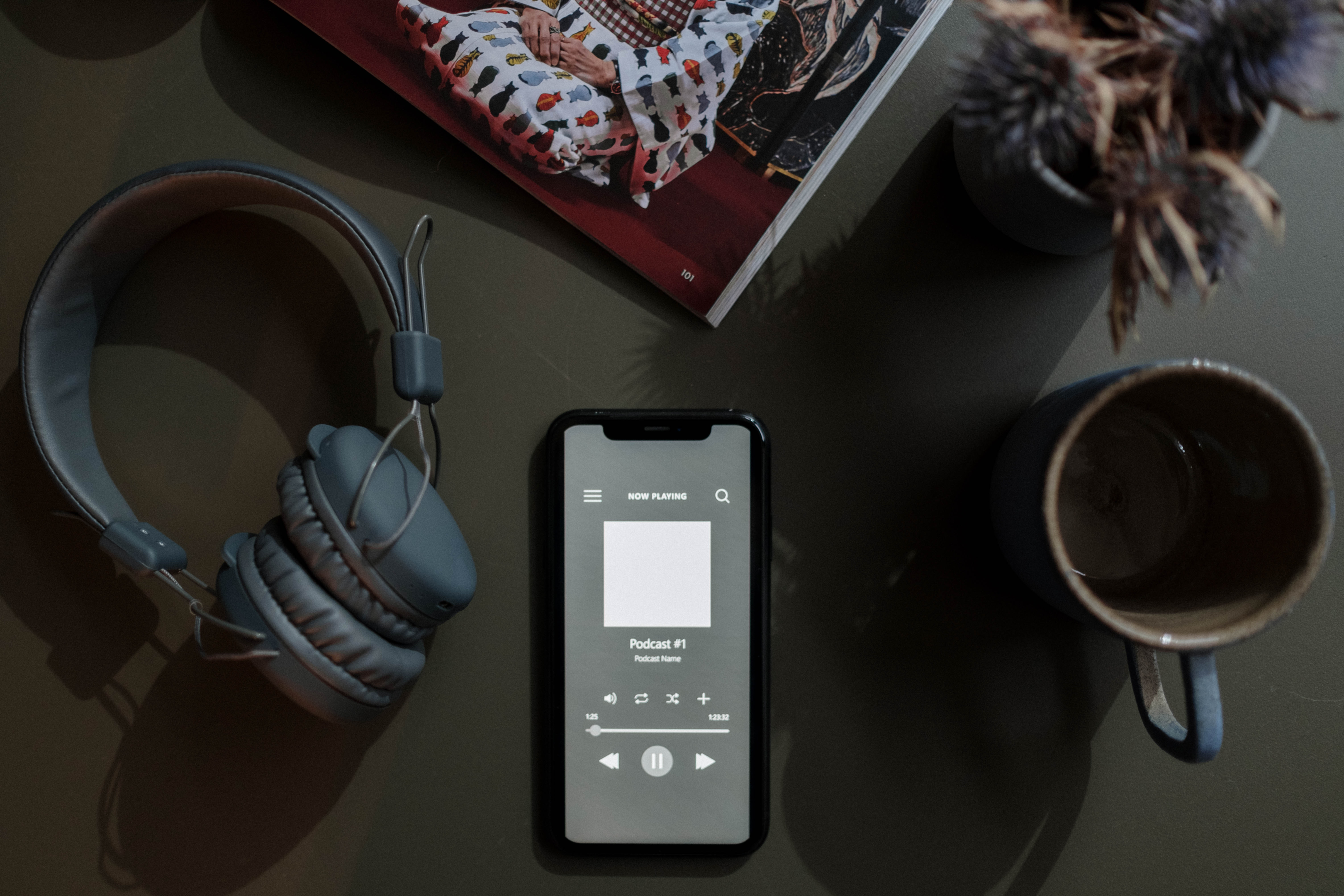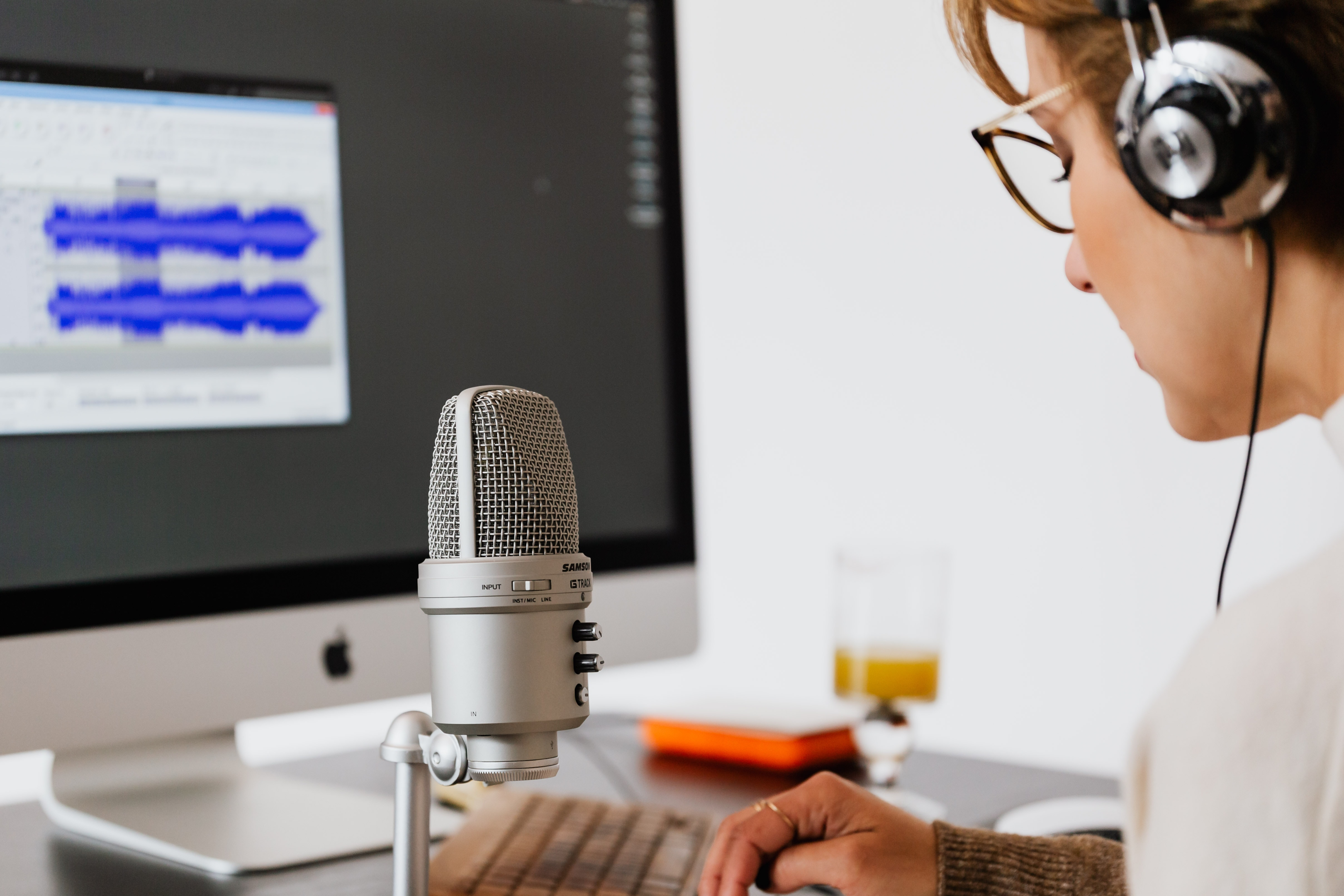
The Rise and Rise of Podcast Advertising: How Can You Leverage Audio Ads for Engagement?
Last update: 18 January 2024 at 02:13 pm
Even though podcasts have been around for over a decade now, it is only recently that podcasting has gained an astronomical amount of popularity. With almost half a billion listeners, podcasting has now become a preferred form of media consumption. As a result, podcast advertising is on the rise among brands that are looking for unique yet effective ways to reach the target audience.
If you are new to the world of podcast advertising, this whole concept may seem a little intimidating. But trust us, you have an ocean full of opportunities waiting on the other end of the rope.
Stick around this blog as we navigate you through the realms of podcast advertising.
Key Benefits of Podcast Ads:
- Broad Reach: Podcasts cover diverse shows, reaching varied demographics.
- Trust Factor: Podcast hosts’ credibility enhances brand exposure and profit potential.

Podcast advertising – what is it?
Podcasting is a process of using podcasts as a medium to advertise or promote a particular service, product or brand.
Podcast ads are a type of programmatic audio that are placed within audio content, including apps, podcasts, music streaming and online radio. These ad placements can either be targeted through open marketplaces or private marketplaces. Marketers can place the ads in audio content from Podcast One, iHeartMedia HowStuffWorks, CBS Radio, TargetSpot, BlogTalkRadio, CBS and so on.
Podcast ads allow marketers to directly speak with their target customers in a one-to-one setting while reaching a highly-engaged audience in a screenless environment, such as a kitchen, car, living room, etc.
Types of podcasts
- Pre-roll ads: Placing these types of podcast ads at the very beginning of the podcast work as part of the introduction and almost every listener listens to pre-roll ads, as they come before the actual content. However, listeners can still choose to skip these ads.
- Mid-roll ads: Placing these types of ads in the middle of the podcast makes listeners less likely to skip them, as they do not want to miss any part of the content. However, people can still choose to not listen to these ads by simply clicking the skip button.
- Outro or post-roll: These types of ads come at the end of the podcast episode. Not many listeners stick around till the end of the podcast. Hence, there might be a drop in how many people listen to post-roll ads. The listener usually remembers such ads well since they are the last thing they hear.
The benefits of podcast advertising
First-time podcast advertising users tend to question the effectiveness of podcast advertising, given there is no face-to-face interaction happening between the customer and the brand.
But you would be surprised to know that podcast ads tend to have 4 times better brand recall than display ads in customers. This clearly states that people remember advertisements they hear in-between podcasts, music streaming, etc.
Besides being memorable, podcast ads help in producing tangible engagement, too, given people tend to act upon ads they hear on podcasts. Also, 33% of respondents in a study conducted on regular podcast listeners mentioned that they “never or rarely” skip ads, offering maximum exposure and air time to brands among hyper-engaged audiences.
Podcast ads are effective because of the nature of their medium. Audio content is quite effective in conveying messages and information.

Other reasons that make podcast ads effective and beneficial are –
- The broad reach – Compared to other marketing mediums, the podcast has a broad reach. The increase in people listening to podcasts only makes them an effective option. Plus, the diverse range of shows leaves marketers spoilt for choice. Podcasts provide access to a wide range of audience demographics regardless of your industry niche.
- The trust factor – Podcasters typically have a loyal following. This means these followers consider the podcast host to be a credible source for information and recommendations. By choosing to mix a credible host with a highly-engaged audience, you get a winning formula for brand exposure, profit and more!
- Hyper-targeted audience – Published content on podcasts captivates a hyper-targeted audience that chooses to engage. As a marketer, you can easily cater to an ideal customer group you know has some level of interest in your niche market.
Now you know podcast advertising & how it benefits your brand. Comprehend how to profit your brand with it.
1- Understanding Your Target Audience
Whether you own an SMB or a large-scale business, using capital wisely must be your priority, right?
Hence, to ensure your podcast ad campaign delivers expected revenue and new customers over time, you must plan everything properly.
Start by comprehending your target audience based on three crucial factors –

1.1- Who is your target audience?
Do not blindly approach any or every podcaster that you come across. Instead, determine what podcast and podcast category may best align with your industry. Spend time determining the quality of their audience. Will their audience be interested in what you offer? Will the audience engage with your niche area? Is the audience base engaging at all?
Avoid choosing a podcast just because it has a good number of followers and is popular. Working with a podcaster whose contents align with your niche will make your ads sound more natural and authentic in the podcast.
In short, aim to associate with hosts, shows or genres that resonate with your target audience or represent your brand values.
1.2- What podcasts do they listen to?
Similar to any other type of content, even podcast contents have its highs and lows. This means not all types of content posted by the same host on the same channel will yield the best results.
Choose a podcast host. Work with them to determine which topics have better customer engagement on their channel. Based on the discussion, you can decide which product or service you can advertise through a particular podcast.
Remember, compared to other content, like video, podcast listeners tend to be biased towards podcast episodes that are 30 minutes. Even the drop-off on podcasts is much less compared to other types of content. What we mean here is no matter where your ad is placed, whether at the beginning or towards the end, your ad still has a good chance of being heard.
1.3- What kind of advertising resonates with them?
As we read earlier, the chances of skipping an ad on a podcast are quite rare, but that doesn’t mean people don’t skip them. Hence, it is crucial to determine which ads have worked in the past and which haven’t.
For instance, there are two types of ads that you can work on –
- Host read ads – These ads are audio ads read by the host of the podcast/show. You can serve host-read ads baked-in or dynamically.
- Produced ads – Audio ads are pre-produced like traditional ads. The media owner receives the final ad creative.
To generate brand loyalty and entice customers into taking relevant action, marketers tend to use host-read ads. However, to add a hint of professionalism, you can always choose to create produced ads.
Just determine which type of podcast advertising works best for the podcast’s audience and then work on it.
2- Crafting Your Podcast Ad
Listed below are four building blocks of effective podcast advertising –
2.1- Length of ad
Podcast ads can span between a few minutes to just a few seconds. However, you need to determine the sweet spot for your target audience. How will you determine that?
Of course, based on what you wish to accomplish from your podcast ad. Here is our suggestion on how to hit different KPIs of Key Performance Indicators –
- A 30-second voice talent podcast advertising is an excellent choice for driving upper-funnel awareness.
- If you wish to tell a longer story while driving considerations, consider choosing 60-second host-read ads.
- To reach a specific audience at scale and drive a mid/upper-level funnel goal, use audio-first ad marketplaces. Such as Spotify, Apple Podcasts, etc. Use a 30-second voice talent ad.
- If your goal is a higher engagement rate, stick to short and sweet ads that prevent skip rates significantly.

2.2- Scripting the ad
Your podcast advertising is the world’s shortest play. Hence, ensure that you maintain a three-part structure to deliver clarity.
It is best to stick with scripts that clearly announce the ads to prevent any confusion among podcast listeners.
Here is a structure idea for the scripting of your ad –
- Start with an intro, such as “This episode is sponsored/brought to you by (BRAND NAME).
- Provide the brand message in three to four lines. Ensure you are delivering the core message here.
- End the ad with a CTA or (call-to-action), such as, for added details on (BRAND/PRODUCT), visit the (BRAND) website.

2.3- The importance of audio quality
There is one common thing between parties and podcasts – they are both better with some good music.
In fact, podcast ads that have proper audio quality and a catchy background score tend to lift the intent higher than those without them.
When using background music in your ad, ensure that it goes hand-in-hand with the tone of your ad. Your notion must be of using sound effects and music to enhance the message and not compete with it.
Also, choose music without lyrics and low intensity. Jarring music can interrupt the ad’s content and message.
2.4- Incorporating a call to action
One of the most important pieces of the podcast ad-creation puzzle, besides length, script and audio quality, is the CTA (Call to Action). Without CTA, driving results would be impossible.
|
Discover the most relevant agencies for your project based on your own specific requirements.
Find an agency!No matter if your CTA is seen or heard, ensure it gives clear and compelling details to the audience on what to do next.
While using an online CTA in the script of your podcast ad, ensure that it is easy and short to read out loud. In case the CTA (URL, offer code, etc.) has strange spellings or is difficult to comprehend, ensure to repeat it multiple times or spell it out in the host read ads.
3- Finding the Right Podcasts to Advertise On
3.1- Understanding the podcast landscape
If you wish to reach a specific group of audience, it is important that you place your ads on appropriate shows and not just popular podcasts. After all, better targeting is key to attracting the right audience for the services and products you offer.
To find a suitable podcast landscape, you can –
- Use podcast media kits to determine how to sponsor your ads. If a good podcast media kit features reliable data, a sponsor can identify if a podcast would be a suitable fit. For instance, you will know about the host’s bio, an overview of the show content and target audience, demographics, audience metrics, download count of the show, pricing and notable accolades.
- Work with podcasts with more competitive separation. This means working with a podcast channel that takes huge amounts of time or restricts working with competing brands. Certainly, your brand does not want its audience to be distracted and compare it with competitors.
3.2- Identifying the right podcasts for your target audience
The pool of podcasts is quite large. You will definitely gain numerous opportunities to connect with your industry’s niche audiences that resonate with your business.
When you choose the right podcast, you are capable of producing ads that relate to the topic of the episode or the series. Doing so could be a strategic move, as those interested in your offerings may determine the pain points that your products and services aim to address.
The easy way of identifying such podcasts is to understand what topics the host covers on a regular basis. For instance, a podcast that mainly talks about finances and the stock market could benefit your financial service firm. Perhaps a podcast media kit would be an impressive tool to determine the right podcast for your niche audience.
3.3- Approaching podcast hosts
Once you have determined the right podcast channel for your business, it is time to approach the podcast host directly.
An in-person connection with the host can come in handy in planning everything from sponsored content to preparing scripts for product ad placements and everything in between.
Reach out to the host to discuss your advertising options. Start with sending an email detailing your brand and letting the host know why you think working with them would be a profitable venture. And while at it, don’t forget to ask about their key success metrics and growth to be sure that they are as promising as you believe them to be.
Post the initial conversation, it is important that you keep the host involved in the creative process. Remember, this is a collaboration, and the involvement of both parties can result in a successful outcome.
4- Measuring the Success of Your Podcast Ads
Podcast ads should be created for success and not just for namesake. Remember, podcast ads tend to have quite an impact. It is upon you to use these ads wisely for your brand’s exposure, profits and more.
One of the important aspects of podcast advertising is measuring its success rate. This could also help you realize where your ads are lacking, the ad’s strength and more, thereby assisting you to make the most out of your dollars spent on it.
4.1- Setting clear goals

Before you can proceed with producing podcast ads for your brand, you must figure out what you wish to achieve through your ads. Get into the depths to comprehend and define what you actually want. You can even conduct surveys of what is out there for inspiration.
For instance, do you wish to educate the audience through podcast ads? Use podcast ads that feature an interview with an industry expert on a certain topic. Encourage the host or the industry expert being interviewed to talk about how your products/services can help the listeners towards the end of the podcast or in between the interview.
If your aim is to entertain the listeners and convert them into paying customers, create ads that delight the podcast’s core audience. For instance, provide extraordinary details of your offerings and how your product is capable of making breakthroughs in the industry – all within the short span of the ad.
Remember, not every ad you produce should result in you making profits. Some can be used to create a loyal customer base, too.
4.2- Tracking metrics
The next step is to determine how you would measure the success of your ad. Of course, downloading is one benchmark, but you must consider other factors, too.
Based on your objectives, it could be developing affinity through attracting talents, episode engagement or generating leads. Hence, take a look at your goals and ensure the metrics you wish to track are sensible.
For instance, if you aim to build brand affinity, then consider measuring the success based on episode engagement and listener growth over time. Identify the loyalty of the listeners – Are they listening to your ads completely? Do they skip? Are the listeners taking any actions post listening to the ad? And so on.
If your goal through podcast advertising is lead generation, gate the podcast ad and make the subscribers your important metric. To further connect the dots between the listeners and prospects, you can feed the listener data into your CRM.
Here are some key elements worth measuring to determine the performance and ROI of the podcast advertisement –
- Direct attribution – While making the announcement in the podcast, the host can call out unique promo codes and vanity URLs. Such tracking systems can allow you to identify which podcast drives better business value.
- Indirect attribution – You can indirectly attribute a huge spike in product purchases right after running the ad.
- Survey – Conduct surveys to determine how people got to know about your brand. Perhaps send emails to those who connect with you asking, “How did you hear about our brand?”
There is a significant time lag between listeners downloading and listening to a podcast episode. Plus, not all downloads happen in a go. Hence, you must maintain your patience. As per Right Side Up, podcast episodes can take at least two weeks to drive conversion and as long as five weeks to fully realize the total conversions.
Irrespective of your goal, ensure to tie it to the metrics that can be measured. And as mentioned, podcast growths take time and can be slow. Hence, benchmarking certain KPIs and utilizing the data to make decisions is inevitable for optimizing podcast ads over time.
4.3- Making adjustments
It is important to test the ads constantly. For instance, if you are producing multiple ads and one of them costs you a much higher cost per conversion, take a step back and reallocate the budget towards other ads.
Consider running two almost similar ads to determine which ad has a higher conversion rate. After that, you can clone the one that is working better and make some changes in the details. With no major changes made, you shouldn’t see a vast difference in the final conversion rate.
Make a few noticeable changes, for instance, the script and length of the ad or perhaps change the background music or audio. Sometimes, even the most unexpected things can have a huge impact on the final outcome.
Another adjustment you can make in your ad is shifting its launch time and date. For instance, determine when are most of the podcast listeners active and request the host to launch the ad-integrated episode accordingly.
Yet another adjustment that you can make post your first ad is launched is changing the demographics for the next one. Narrow down the audience to the highest-fit individuals. For instance, an educational e-book ad for B2B companies and their employees have no business in a demographic that is aged between 18 and 24. Never shy away from jumping from one podcast to another in hopes of finding the perfect niche market.
Based on your research on demographics and the audience the podcast serves, create ads that will truly reflect the good side of your offerings.
Bottom line
Podcast advertising has become the most preferred way for brands to engage with and reach the target audience, given the opportunities it offers are exponential. The broad reach of the podcasts, the trust factor that the podcast hosts have already created among their audience and the captive, hyper-targeted audience on podcasts make it easy for marketers to obtain maximum exposure and airtime through podcast ads.
Besides, podcast marketing can help with building brand awareness, generating brand loyalty and making a direct business impact on the target audience.
So, if you haven’t considered using podcasts for marketing your brand and business, it is time you incorporate them into your marketing strategy, given the future of podcast advertising looks bright. Also, the rise of dynamic ad insertion will likely shape the future of podcast advertising, meaning you can place different ads for different listeners on the same podcast episode.
Wait no more and scan through Sortlist’s archives to find your business a reliable podcast advertising agency capable of targeting ads effectively and tracking the ad performance more accurately.
FAQs
The cost of a 30-second ad on a podcast can vary widely depending on factors such as the podcast’s popularity, niche, and audience size. On average, prices can range from a few hundred to several thousand dollars per ad, with some highly popular podcasts commanding higher rates.
Yes, podcasters can advertise their own podcasts to increase visibility. This can be done through various channels, including social media, email newsletters, collaborations with other podcasters, and utilising podcast directories. Paid advertising on social platforms can also be effective in reaching a broader audience.
When writing an ad for a podcast, keep it concise, engaging, and aligned with your brand or podcast theme. Clearly communicate the value proposition, include a call-to-action, and consider incorporating a unique discount code or special offer for listeners. Make sure the tone and style match the overall vibe of your podcast.






